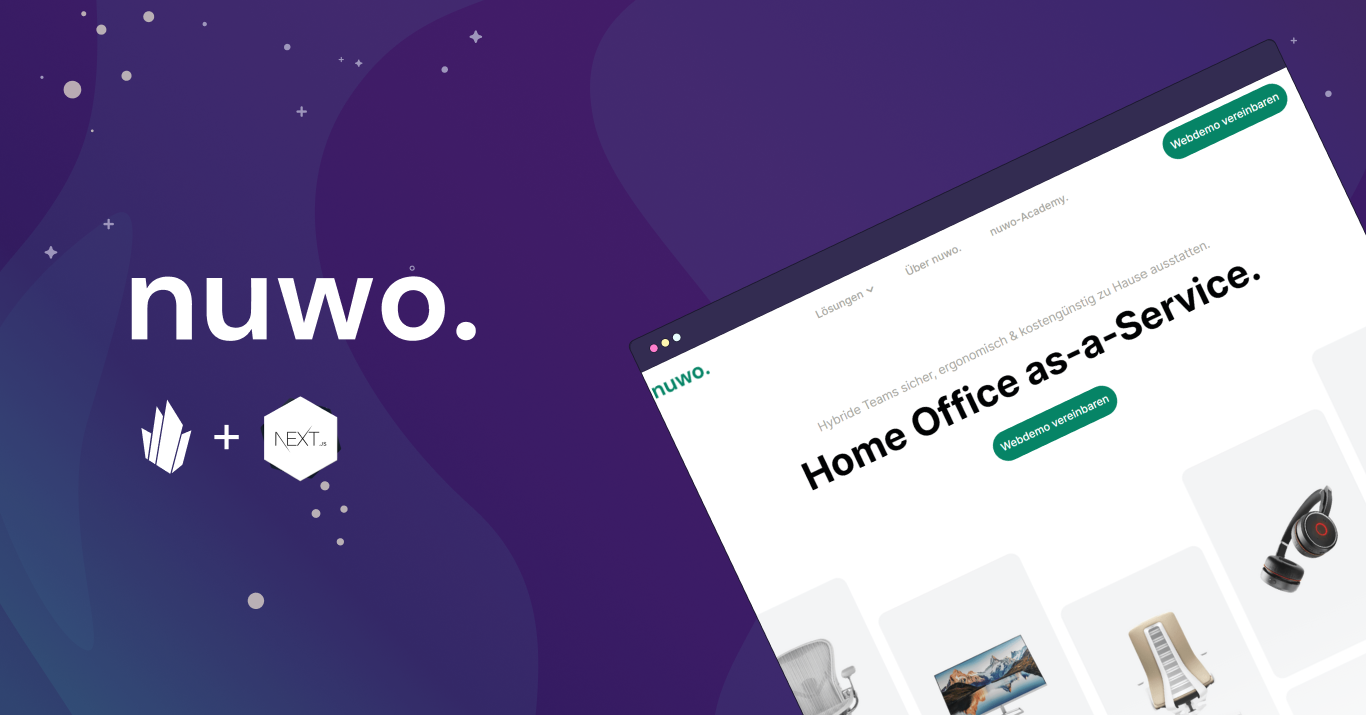B2B eCommerce: More than a Trend in 2024
B2B commerce (business-to-business commerce) marks the online sale of services and/or goods between businesses, and it is nowhere near as talked about as B2C, which is strange considering that the B2B eCommerce market is over five times (5X) more valuable.

The B2B eCommerce sector is undeniably booming, marked by an exhilarating growth trajectory. As of 2021, different sources have reported the market size ranging from USD 2.3 billion to a staggering USD 7.35 trillion, with a projected Compound Annual Growth Rate (CAGR) varying from 17.48% to 29.3% for the coming years.
One notable driver of this growth is the swift ascendancy of manufacturers in the eCommerce arena, who amplified their online sales by 18.4% in 2021, reaching $543.25 billion from the previous $458.7 billion.
The fervent expectations of B2B sellers further underscore this upward trend, as nearly 20% anticipate their eCommerce sales to burgeon by at least 25% in 2023.
B2B eCommerce is not just a modern-day convenience; it's a strategic imperative for businesses aiming to secure a competitive edge in today's digital-first marketplace.
But is it an approach for your business?
What Is and How Does B2B eCommerce Work?
B2B or business-to-business (vs. B2C, i.e., business-to-consumer) commerce entails selling products or services between two businesses digitally through an online platform.
Your products or services are usually listed on an eCommerce platform where B2B buyers can interact with and purchase them themselves. The orders are then processed digitally, and all this greatly helps you improve your service while reducing costs at the same time.
Types of B2B eCommerce
Most often, B2B eCommerce transactions happen between manufacturers, wholesalers, retailers, distributors, and other businesses and organizations in the industry that use your products regularly.
B2B2C eCommerce
In this model, a B2B business gets to sell products to the end-consumer by partnering with another B2B or selling directly to the consumer, helping them increase their market.
To be categorized as the B2B2C model, the platform needs to cater to both business and end consumers at the same time.
To better illustrate, you can have:
1) a manufacturer selling their products to a B2B who then sells them directly to the end consumer or
2) a manufacturer lists its products on a platform where businesses and consumers can purchase them.
Supplier-oriented B2B eCommerce
Supplier-oriented B2B eCommerce will list several suppliers on the platform where B2B buyers can choose the one that best answers their demand. It’s important to note that, in this case, the suppliers control the process, from the pricing to the experience.
As an example, say that your business needs new chairs. You could head to a supplier-oriented B2B eCommerce platform and choose between different suppliers, the one that best suits your needs, or even buy different chairs from different suppliers.
💡A different way of thinking.
Speaking of chairs, there are companies with a tad different approach, like NUWO, a home office as a service solution. Read more in our NUWO case study.

Buyer-oriented B2B eCommerce
Similar to how governments employ private companies, in the buyer-oriented B2B model, the buyer lists the goods/services they need and invites other businesses to submit their offers. Then, the buyer gets to choose the one that best fits.
The buyer could own this eCommerce platform or list the project requirements on a third-party B2B eCommerce platform for a certain fee.
Wholesale B2B eCommerce
You’re probably familiar with wholesale, the model where businesses digitally purchase various goods in bulk from wholesalers (usually manufacturers or distributors) at a lower price and then sell them to consumers at retail value.
“In bulk,” “at a lower price,” and “eCommerce platform” are the keywords in this model.
Intermediary-hosted B2B eCommerce
Also known as a horizontal marketplace, the intermediary-oriented B2B eCommerce model means that a third party owns the platform where they match B2B buyers and sellers.
That usually means the third party imposes certain guidelines and charges fees to list goods or call for goods. Think Amazon Business, Google Shopping, or Alibaba.
Choosing the Right Platform: A Pillar of B2B eCommerce Success
The platform you choose is the backbone of your B2B eCommerce venture, and getting it right is non-negotiable. A robust platform can spell the difference between soaring successes and frustrating failures. For a deeper dive on how to choose an eCommerce platform, check out the linked blog post. Here, we’ll review the critical considerations and briefly mention the leading platforms in the domain.
Criteria for Selection
Your business need is your main criterion. That’s easier to say than to understand what it means. But there are general things you should look at/for when comparing platforms for your business.
Integration Capability. Your platform must seamlessly integrate with existing systems (ERP, CRM, PIM, etc.) and third-party applications. An API-first approach is often a hallmark of integration-ready platforms.
Scalability. Look for platforms that can grow with you. As your business expands, your platform should be able to handle increased traffic, orders, and data without a hitch.
Customizability and Extensibility. A platform that allows for customization and extension to meet your unique business requirements is indispensable. Look for platforms with rich APIs and a thriving developer community.
Security and Compliance. Ensuring the security of your business and customer data is paramount. Opt for platforms that comply with industry standards and regulations.
Performance and Reliability. Your platform should deliver fast, reliable performance, ensuring customers have a seamless, frustration-free shopping experience.
Analytics and Reporting. Comprehensive analytics and reporting capabilities are crucial for making informed business decisions. Your platform should provide real-time insights into sales, customer behavior, and other critical metrics.
Spotlight on Leading Platforms
With the shift to online selling relieving on eCommerce platforms, businesses are finally moving away from Excel sheets, emails, and other traditional means of digital sales.
An eCommerce platform becomes your one-stop-shop, your central hub where you can easily manage and scale all your selling operations, whichever of the B2B mentioned above eCommerce models you may have adopted.
At the same time, the platform you chose is your virtual storefront where your customers get to research, browse through, and purchase your products or services, while the backend helps you automate and handle your sales processes, such as managing customer data, processing payments, and analyzing data for better sales optimizations including various promotions and personalized user experiences.
Best of all, there are many eCommerce platforms to choose from today, perfect for B2B.
Say you are familiar with WordPress and want to stick with it. WooCommerce is an open-source eCommerce plugin for WordPress websites.
Then there is Shopify, one of the most popular eCommerce platforms for B2B and B2C business models, thanks to its features, integrations, and support that could serve just about any business. Pretty much the same goes for monoliths such as BigCommerce or Magento.
Finally, there are solutions like Crystallize, a new breed of eCommerce platforms that rely on a headless architecture and APIs to allow for true composable commerce. Whether you’re a small business or an enterprise with a high sales volume, our long list of customization options, flexible APIs, and various integrations are sure to meet your eCommerce needs.
Each platform has unique strengths (which we’ve covered in the linked posts). Making the correct choice hinges on meticulously evaluating your business needs, technical capabilities, and long-term growth aspirations.
Subscription All the Way
In the dynamic world of B2B, the subscription model has emerged not merely as a trend but as a cornerstone strategy. Shifting away from traditional one-time transactions, this model revolutionizes how businesses interact and how value is delivered and perceived.
The primary allure of the subscription model in B2B lies in its ability to create predictable, recurring revenue, unlike the traditional sales model, where revenue ebbs and flows, subscriptions offer a steady income stream, which is particularly valuable in navigating the unpredictability of B2B markets.
Beyond financial predictability, the subscription model engenders a more profound, ongoing relationship with customers. It shifts the focus from single transactions to long-term service provision. This continuous engagement gives businesses invaluable insights into customer needs, preferences, and behaviors.
From a customer's perspective, the subscription model offers flexibility and scalability.
However, implementing a subscription model in B2B requires more than just a shift in pricing strategy. It involves rethinking product design to suit ongoing delivery, restructuring sales and marketing strategies towards relationship-building, and investing in customer success to ensure subscribers derive continuous value.
Then, there is the tech aspect of it, which moves us back to choosing the right platform problem. Having a trustworthy partner that holds your beck(end) and manages subscription complexity simultaneously (like we do) might be handy.
Comic source: Subscription to Hell👇

Best Practices - Customer-Centric Approach
To start with, make sure you research and adopt B2C eCommerce tips. This means that you should make sure you hire professional graphic designers, provide professional images and videos of your products and testimonials from previous customers, employ UX boosters such as a great search engine and mobile-first product listings, and enable automation for personalized offers (based on earlier purchases for example), provide users with real-time product and stock availability at crazy speeds, etc.
This may be a given, but you can continually improve your user experience. If you’re an intermediary or your clients aren’t familiar with digital B2B eCommerce websites, your storefront should be as intuitive and fast as possible.
Offer better onsite search functionality and rely on personalization.
On a similar note, try to maximize the flexibility of your pricing model. Provide customizable but automated and instantly available prices based on the quantity your customers can choose. Moreover, it provides various payment options for B2B payments, including domestic and international payments such as digital invoicing and bank transfers.
Finally, provide content for self-education. Host a company blog where you’ll publish educational pieces with vital information your customers usually ask about. Give them a chance to find what they need. And while it may feel like you have to be formal for B2B, don’t be afraid to use simple, everyday language. After all, other humans will be buying from your business.
Consumer-Centric Approaches in B2B Commerce
As the line between B2B and B2C continues to blur, adopting a consumer-centric approach in B2B commerce is no longer optional but imperative. Thanks to the immense popularity of the Direct-to-Consumer (D2C) approach, consumer expectations have changed and shaped B2B commerce buyers' journeys.
What did D2C bring onto the table?
Data-Driven Insights. D2C enables direct interaction with end-users, providing a goldmine of data that can be harnessed for better product development, marketing, and customer service.
Faster Iteration and Innovation. Direct feedback from end consumers allows for quicker iteration and innovation. D2C facilitates a shorter feedback loop, enabling rapid adjustments to market demands.
Personalization at Scale. The importance of personalization in eCommerce is already a story told too many times. D2C perfected this. And it's moving forward even more. Utilizing AI and machine learning for real-time personalization enables a tailored shopping experience even as your user base expands.
What are modern B2B consumers' expectations?
Seamless Omnichannel Experience. Consumers expect a seamless experience across all touchpoints. Employing APIs to ensure consistency across web, mobile, and other channels is crucial.
Real-Time Inventory Management. Utilize real-time inventory management systems to ensure accurate stock levels across all channels, preventing stockouts or overstock situations.
Enhanced Search and Discovery. Implementing advanced search algorithms and filtering options to help users quickly and easily find the needed products.
Mobile-First Design. Ensure your platforms are optimized for mobile usage, employ responsive design, and consider mobile performance from the outset.
Performance Optimization. Utilize modern web technologies like Progressive Web Apps (PWAs) and optimize server response times to ensure your platforms meet the performance expectations of modern consumers.
Consumer-centricity is more than a buzzword; it's a technical and strategic framework that B2B eCommerce platforms must embrace to meet the evolving demands of modern commerce.
Innovations Driving B2B eCommerce
As B2B eCommerce propels forward, the imperative for modernization becomes paramount to seize the burgeoning opportunities and to thrive amidst the stiff competition. The conventional legacy systems and solutions that once steered B2B operations are fast becoming obsolete, and modernization is the linchpin to unlocking enhanced operational efficiencies, robust customer relationships, and new revenue streams.
Headless Commerce is Eating the World
Headless architecture stands out as a game-changer among the technological innovations reshaping the landscape of B2B eCommerce.
In a headless approach, the front-end presentation layer is decoupled from the back-end logic and infrastructure, thus granting businesses a higher degree of flexibility and customization. This architecture facilitates quicker deployments, seamless integrations, and a more personalized shopping experience, aligning precisely with the expectations of modern B2B buyers.

Recent data underscores the meteoric rise and sweeping adoption of headless commerce worldwide. It is anticipated to grow at a CAGR (Compound Annual Growth Rate) of 20.5% through 2027, reaching $32.1 billion. Moreover, over six in ten retail companies plan to migrate to headless commerce platforms by 2024, while over 20 percent already use them (source: headless commerce stats).
This global trend is powered by a compelling array of benefits that headless commerce offers, such as reduced time to market, improved website performance, increased ROI, tech modernization, and future-proofing of your tech stack.
Adopting headless commerce is more than a mere trend; it's a strategic move towards a more agile, responsive, and customer-centric business model.
Mobile Commerce and 5G Connectivity
The blossoming of mobile commerce (m-commerce) and the advent of 5G connectivity are twin forces propelling B2B eCommerce to new frontiers. M-commerce sales in the US leaped from $41 billion in 2013 to a whopping $359.32 billion in 2021, epitomizing the monumental shift towards mobile platforms.
5G, with its lightning-fast download speeds and lower latency, is set to further fuel this m-commerce boom by rendering online browsing and transactions more efficient and enjoyable.
Artificial Intelligence (AI), Augmented Reality (AR), and Virtual Reality(VR)
There is no doubt that 2023 was the year of AI. More than anything, 2024 will be the year of making AI useful. Right now, we’re just chipping the tip of the iceberg that is AI, and the topic deserves a post on its own. And even now, we can speak of the cool use cases like heightened personalization that starts with AI translations, for example.
On the other hand, AR and VR are metamorphosing the eCommerce landscape as we speak by enriching brand awareness, revenue generation, and customer satisfaction through immersive shopping experiences. Apple Vision Pro might be the first real step towards that.
We are on the brink of change in how we shop....and it looks amazing.
Moving Forward
Even though there are a lot of misconceptions surrounding the industry, there is a clear shift toward B2B eCommerce. There are a couple of reasons for that, really. Reduced infrastructure and overhead costs and better management of suppliers and customers for one. It is also an opportunity to sell more to existing customers and build better partner relationships with both suppliers and clients.
Running a B2B business. Now is the best time to consider adopting B2B eCommerce.
We can help with that. Schedule a 1-on-1 demo so we can show you how😎
Follow the Rabbit🐰

Reimagining eCommerce: the Story of Crystallize
Instead of building a better PIM, CMS, eCommerce, or order management service, we wanted to design an API layer you need to market and sell your products on any channel, at any scale, and in any way you want it. A perfect product story engine, if you will.

What Is Composable Commerce?
No longer a buzz term, composable commerce represents a paradigm shift in eCommerce architecture, fundamentally redefining how businesses approach their online shopping experiences. Given the benefits, it’s no wonder.

